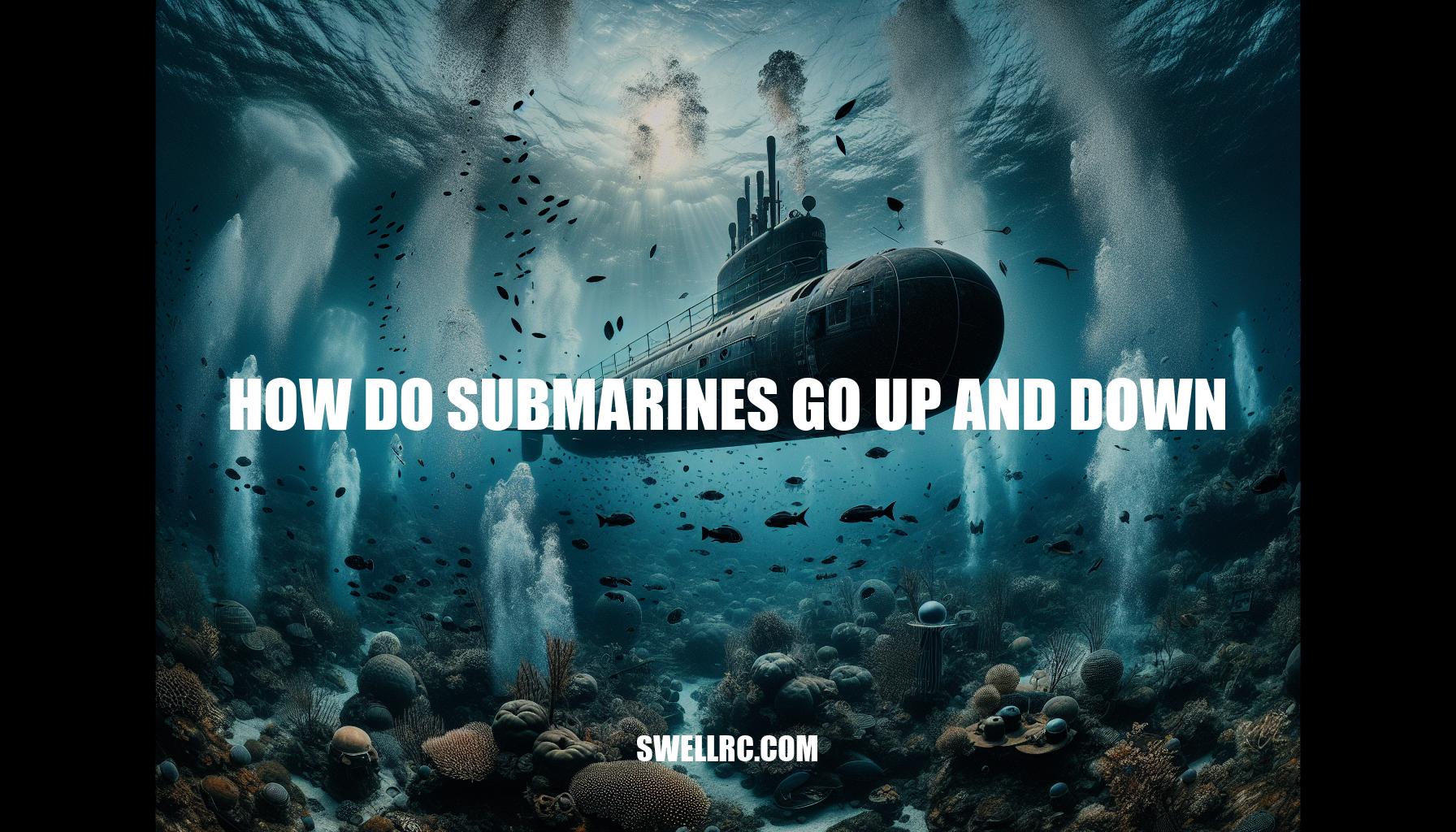How Do Submarines Go Up and Down
Step into the mysterious world of submarines, where science, engineering, and art converge to create vessels that can elegantly dance beneath the waves. Have you ever wondered how submarines navigate the depths, seamlessly going up and down with precision and grace? Let’s unravel the secrets behind the vertical movement of these underwater marvels, focusing on the intricate mechanisms that enable them to control their buoyancy and depth.
Ballast Tanks and Trim Tanks: The Unsung Heroes of Submarine Buoyancy
Submarines, those enigmatic vessels that glide beneath the waves, owe their graceful buoyancy to a delicate dance between water and air. Let’s unravel the mechanics of this aquatic ballet, focusing on the unsung heroes: Ballast Tanks and Trim Tanks.
1. Ballast Tanks:
- Purpose: These tanks are the puppet masters of buoyancy.
They deftly toggle between water and air, shaping the submarine’s destiny.
- Surface Mode: When basking at the surface, ballast tanks gulp down air. The submarine, lighter than the surrounding water, floats like a contented cork.
- Diving Mode: As the submarine descends, these tanks guzzle water, turning the tables. Now, it’s denser than the sea, embracing negative buoyancy.
- Hydroplanes: Picture tiny wings on the stern—hydroplanes.
They nudge the submarine’s nose up or down, orchestrating the dive.
- Cruising Depth: To stay level, trim tanks (more on those later) fine-tune buoyancy. It’s like balancing a cosmic seesaw.
- Steering and Stability: The tail rudder and hydroplanes pirouette the submarine. Some even flaunt a secret secondary propulsion motor.
- Emergency Surfacing: When crisis strikes, high-pressure air inflates the ballast tanks, catapulting the vessel skyward.
2.
Trim Tanks (Auxiliary Tanks):
- Function: These tanks are the submarine’s whisperers. They fine-tune buoyancy and maintain trim (horizontal balance).
- Buoyancy Control: Water in or out, they adjust weight variations with Zen-like precision.
- Horizontal Trim: Balancing act! Transfer ballast water between trim tanks to keep the submarine level.
- Hydroplane Adjustment: Those trusty hydroplanes?
They’re synchronized to steer the hull downward while keeping it parallel to the ocean floor.
In summary, these ingenious systems allow submarines to waltz through the depths, adjusting their buoyancy as if whispering sweet secrets to the sea. 🌊🚢🔍
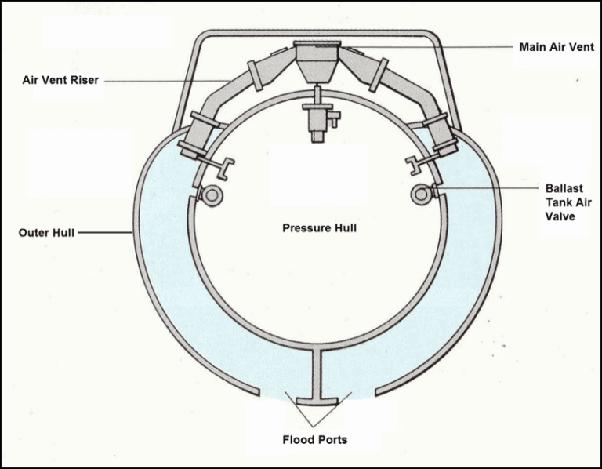
Submarine Maneuverability Mechanisms
Submarines operate in a mysterious world beneath the waves, where precision and control are paramount. Let’s unravel the secrets of their vertical movement and maneuverability.
1. Ballast Tanks and Buoyancy:
Submarines possess ingenious ballast tanks that can be flooded or emptied to adjust buoyancy.
When they wish to dive, these underwater vessels open vents, allowing water to rush in. The added weight causes the submarine to sink gracefully into the depths. To resurface, compressed air expels water from the ballast tanks, lifting the submarine toward the sunlit surface.
2.
Hydroplanes and Tail Rudder:
Imagine hydroplanes as tiny wings on the submarine’s stern. By altering their angle, the submarine controls its pitch—the fore-aft orientation. Meanwhile, the tail rudder steers the vessel left or right.
3.
Propulsion and Angle of Attack:
Submarines wield their primary propulsion systems (usually diesel engines or electric motors) to generate forward or backward thrust. But how do they ascend or descend? Here’s the magic: by adjusting their angle of attack.
When ascending, submarines tilt their noses upward, creating lift. For descent, they tilt downward. This dynamic interplay of propulsion and angle ensures precise vertical control.
4.
Air-Independent Propulsion (AIP):
AIP systems provide extra endurance for diesel-powered submarines. These marvels generate electricity underwater, sans external air. Types include the Stirling Engine, Fuel Cell, and MESMA (Steam Turbine).
Stealthy and self-sufficient, AIP submarines glide silently through the ocean depths.
So next time you ponder the depths, remember that submarines dance with physics, using their buoyancy ballet and angle acrobatics to explore the hidden abyss.
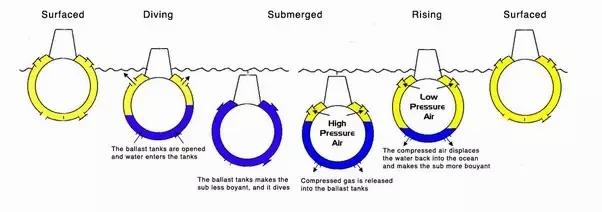
Mechanisms for Submarine Depth Navigation
Modern submarines rely on a combination of ingenious systems to navigate the depths with precision. Let’s dive into the mechanisms that allow these underwater vessels to maintain their desired depth:
- Ballast Tanks: These strategically positioned tanks within the submarine’s hull play a crucial role in controlling depth. By filling them with water, the submarine can submerge; pumping out the water allows it to resurface.
Adjusting the water level in these tanks changes the overall buoyancy of the vessel.
- Trim Tanks (Depth Control Tanks): For more precise depth control, submarines use smaller depth control tanks (DCTs). These hard tanks, designed to withstand higher pressure, allow the submarine to achieve neutral buoyancy. By adjusting the water level in the trim tanks, the vessel remains level at any set depth.
- Hydroplanes (Diving Planes): Submarines feature movable surfaces called hydroplanes or diving planes.
When cruising at a specific depth, these hydroplanes are leveled to ensure the submarine travels horizontally through the water. Their automatic adjustments help the sub maintain its depth, allowing it to glide silently beneath the waves.
- Fuzzy Logic Control: Researchers explore advanced control methods for depth regulation. Fuzzy Logic Control (FLC) provides nuanced decision-making by considering imprecise inputs.
It outperforms traditional controllers, ensuring accurate depth maintenance during submarine operations. Type-2 Fuzzy Logic Control (T2FLC) shows promising results in this critical task.
In summary, modern submarines combine ballast tanks, trim tanks, hydroplanes, and cutting-edge control systems to navigate the ocean’s depths effectively and safely.
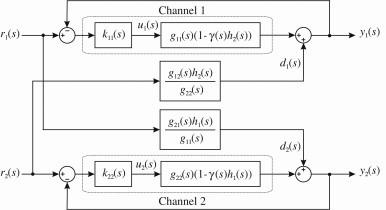
Submarine Safety and Procedures
Submarines operate in challenging and hazardous environments, where safety is paramount. Let’s explore the key aspects:
1. Submarine Safety Programs:
- SUBSAFE: Ensures hull integrity to prevent flooding and verifies critical system operability.
Maximum reasonable assurance of safety.
- Deep Submergence Systems Scope of Certification (DSS-SOC): Certifies deep submergence systems for reliability and safety.
- Fly-By-Wire Ship Control System: Enhances control during ascent and descent.
2. Emergency Ascent Procedures:
- Buoyancy Control System (BCS): If malfunction occurs, submariners manually control buoyancy. Slowly release air from buoyancy compensator (BCD) while breathing out to prevent lung over-expansion.
- Stability and Trim: Maintain acceptable stability and trim during ascent, descent, and submersion.
Surface with hatches open under normal conditions without downflooding.
3. Training for Handling Emergencies:
- Simulation Drills: Regular drills simulate flooding, fires, and propulsion failures.
- Emergency Procedures: Submariners learn specific protocols for rapid ascent or controlled descent.
- Team Coordination: Effective communication and teamwork are crucial during emergencies.
Submariners face unique challenges, and their safety relies on continuous training, adherence to protocols, and robust safety programs.
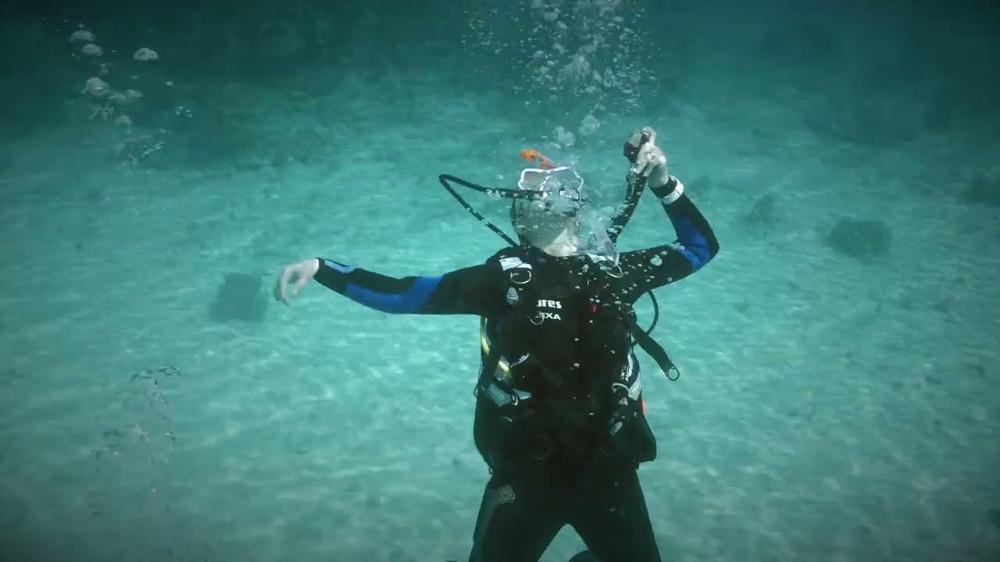
In conclusion, submarines are not just vessels that traverse the ocean depths; they are masterpieces of engineering and ingenuity. The ballet of buoyancy, the finesse of trim tanks, and the precision of hydroplanes all work in harmony to allow submarines to go up and down with remarkable control and stability. As we delve into the depths of submarine technology, we uncover a world where science and art intertwine, shaping vessels that can navigate the hidden abyss with poise and purpose.
So, the next time you ponder how submarines go up and down, remember the intricate dance of ballast tanks, the subtle adjustments of trim tanks, and the artful maneuvers that define the graceful ascent and descent of these underwater wonders.

